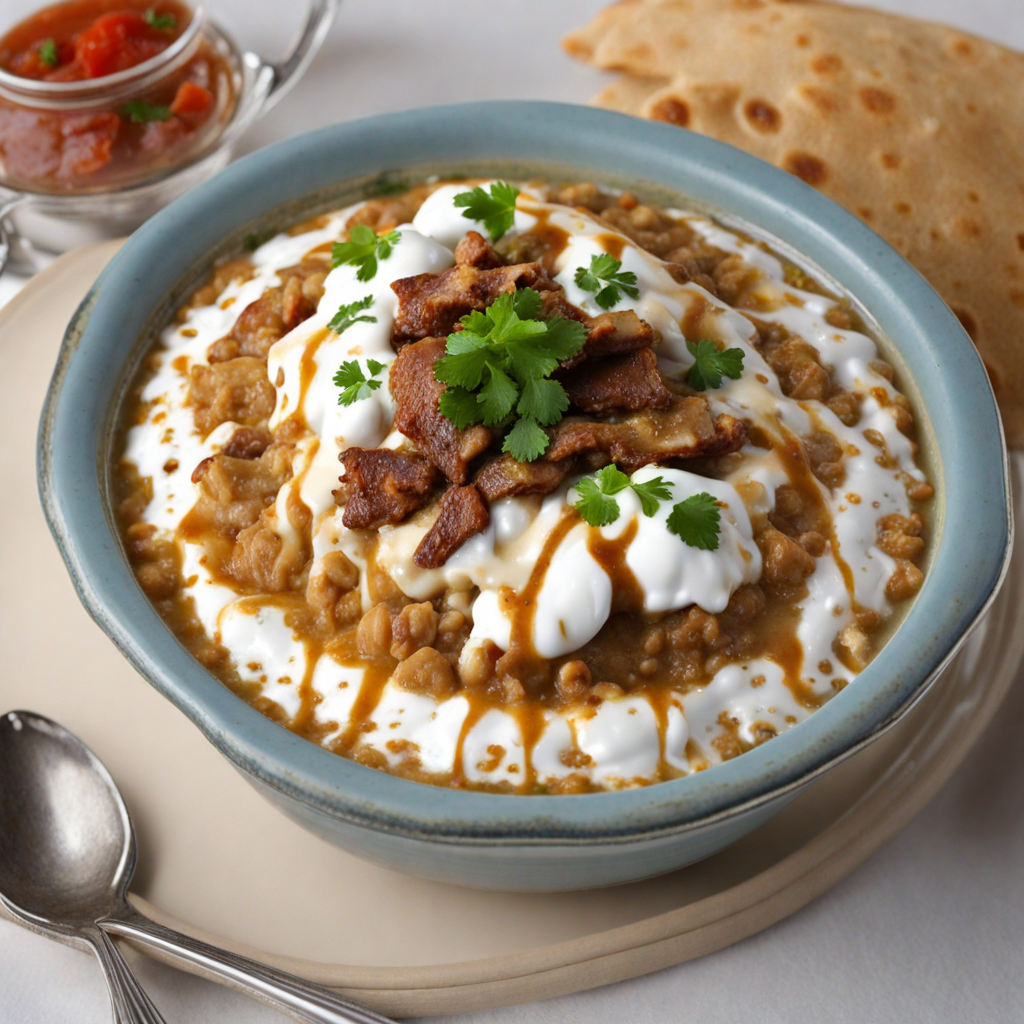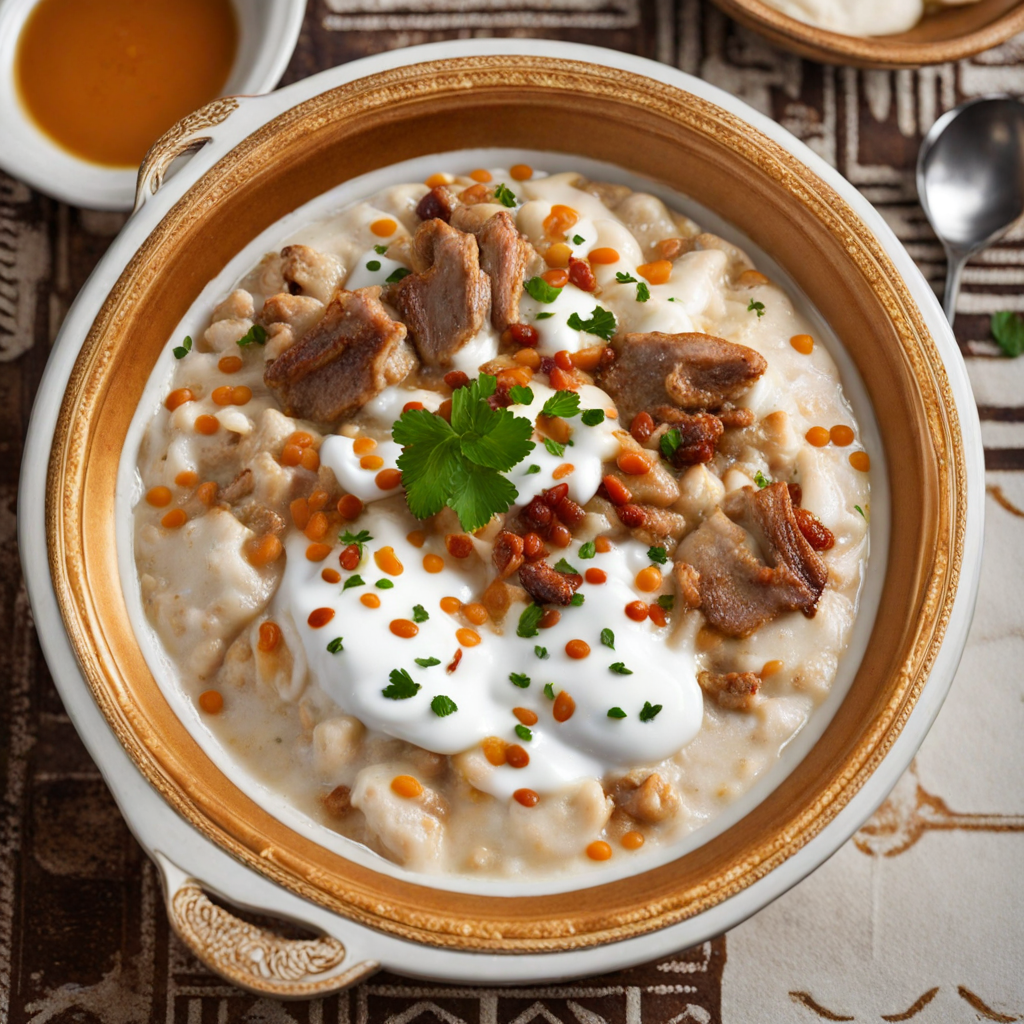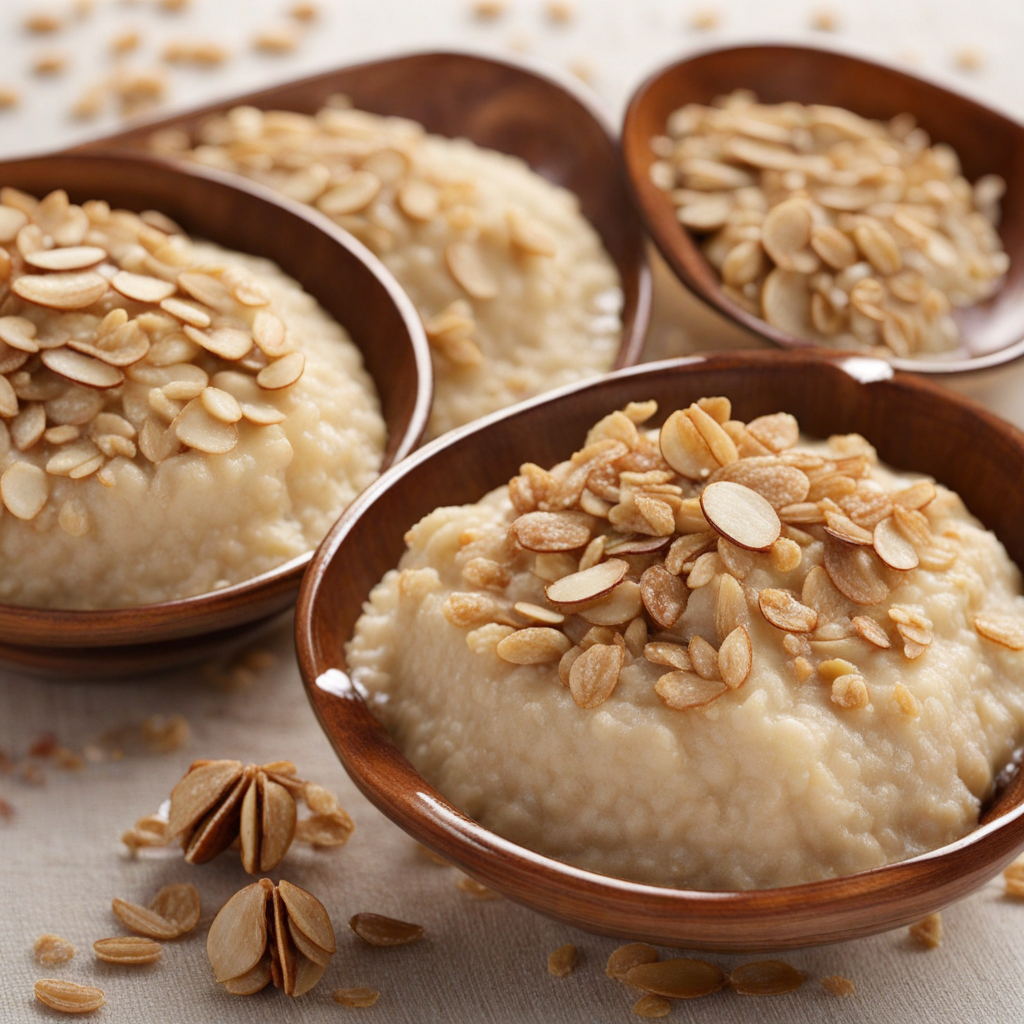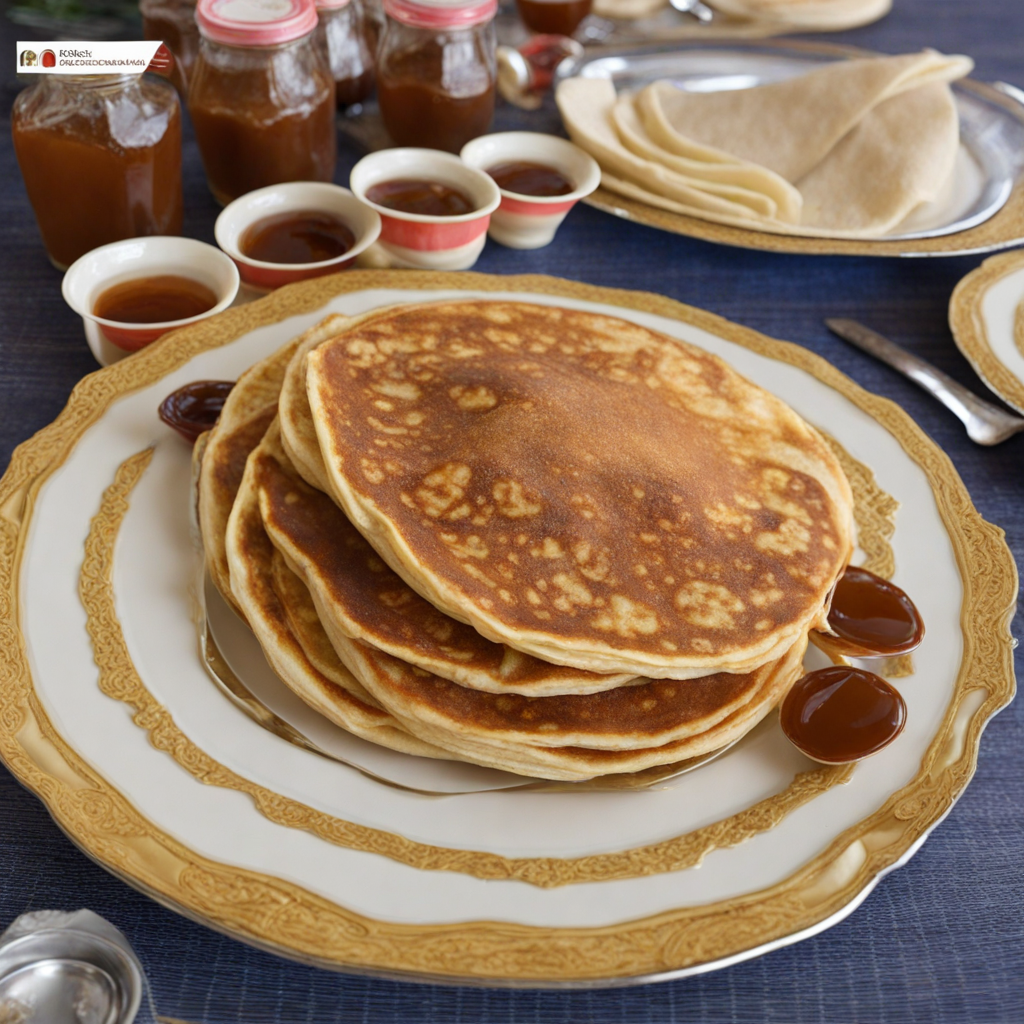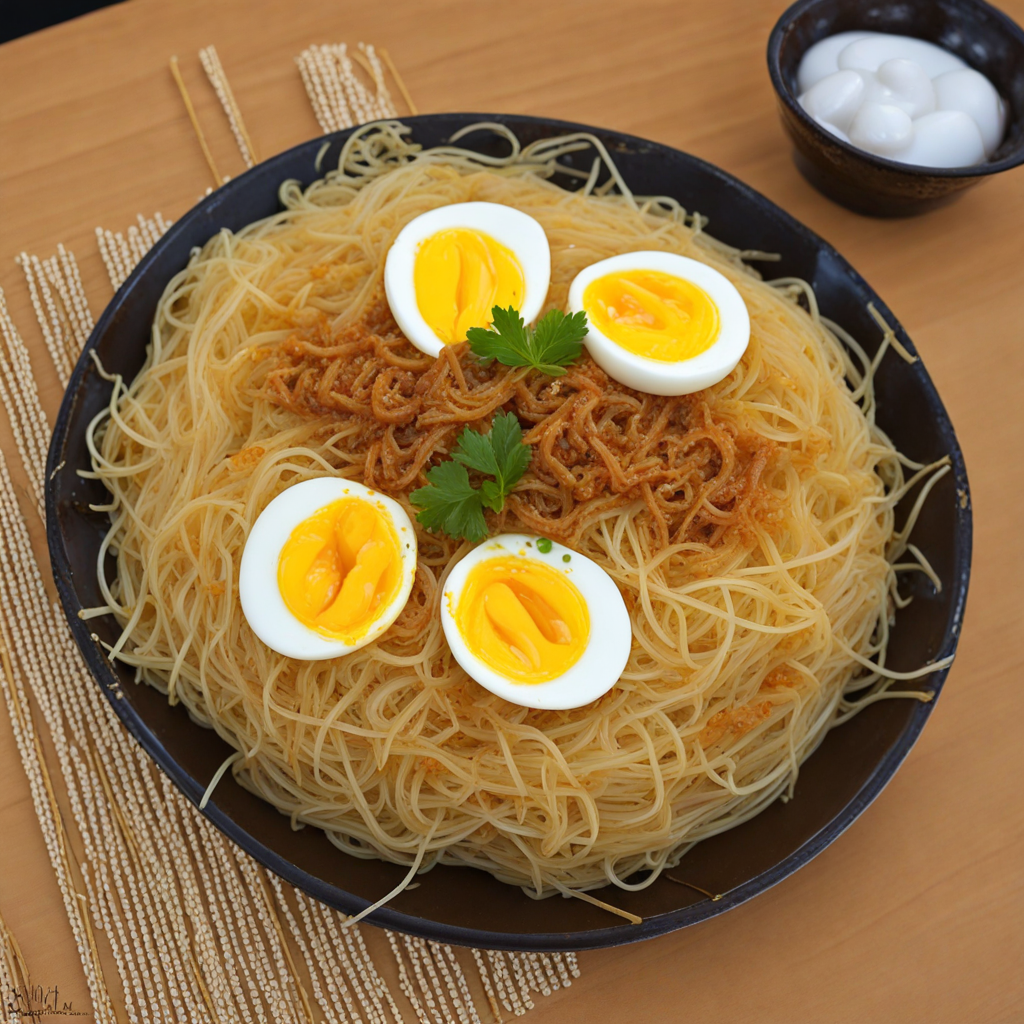Fatteh
Fatteh is a delightful and hearty dish that epitomizes the comforting and rich flavors of Middle Eastern cuisine, particularly in the United Arab Emirates. At its core, Fatteh consists of layers of toasted or fried bread, typically pita, which is then topped with a luscious mix of ingredients that can vary widely. The bread serves as a base, soaking up the flavorful sauces and juices, creating a satisfying combination of textures. Often, the dish is further enhanced with tender meat such as chicken or lamb, chickpeas, and a garlicky yogurt sauce that adds a creamy, tangy element to every bite. The aromatic spices used in Fatteh are what truly set it apart, inviting you to savor the warmth and depth of flavors. Common spices include cumin, coriander, and cinnamon, which impart a warm, earthy aroma that envelops the dish. The final touch often comes from a sprinkle of pine nuts or almonds, adding a delightful crunch that contrasts with the softness of the bread and meat. Additionally, fresh herbs like parsley or mint are usually incorporated, providing a refreshing lift that balances the rich components of the dish. Fatteh is not just a meal; it's an experience best enjoyed with family and friends, often served during gatherings or special occasions. Each bite is a harmonious blend of flavors and textures, making it a comforting dish that resonates with the heart of Emirati culture. Whether enjoyed as a main course or a shared platter, Fatteh invites you to explore the vibrant culinary traditions of the UAE, offering a taste that is both unique and unforgettable.
How It Became This Dish
## The History of فتة (Fattah) in the United Arab Emirates Origins Fattah, a traditional dish found throughout the Middle East, holds a special place in the culinary landscape of the United Arab Emirates (UAE). While its precise origins are difficult to pinpoint, it is widely believed that Fattah has roots that trace back to the Levant region, encompassing modern-day Lebanon, Syria, and Palestine. Historically, Fattah was a dish created to utilize leftover bread, a testament to the resourcefulness of cooks in times of scarcity. The combination of bread, rice, and meat reflects the agricultural practices and available resources of the region, making it a staple in many households. In the UAE, the dish has adapted to local tastes and ingredients, incorporating flavors and practices unique to Emirati culture. The use of rice, often flavored with spices and served with a variety of meats, showcases the culinary influences of Persian, Indian, and even African cuisines, which have all played a role in shaping the region's food heritage over centuries. Cultural Significance Fattah is more than just a dish; it symbolizes hospitality and the communal spirit that defines Emirati culture. It is often served during festive occasions, family gatherings, and special celebrations, embodying the values of sharing and togetherness. The preparation and consumption of Fattah often involve the family unit, with members gathering to assemble the dish, highlighting the importance of family and communal bonds in Emirati society. Traditionally, Fattah is made with layers of bread, meat, and rice, topped with yogurt and a drizzle of garlic or tahini sauce. The dish is usually served in large platters, encouraging diners to help themselves, reinforcing the communal aspect of the meal. The act of sharing Fattah fosters connections among family and friends, making it a centerpiece of social gatherings. Development Over Time As the UAE has evolved from a collection of small, coastal fishing and pearling communities into a modern, globalized nation, so too has the dish of Fattah. The discovery of oil in the mid-20th century catalyzed rapid economic growth and urbanization, leading to an influx of expatriates and culinary influences from around the world. This transformation has impacted the way traditional dishes like Fattah are prepared and consumed. In contemporary Emirati cuisine, Fattah has taken on new forms, reflecting both the nation’s rich heritage and its modern identity. While traditional recipes remain popular, chefs and home cooks alike experiment with diverse ingredients and innovative techniques. For instance, some versions of Fattah now incorporate saffron, nuts, or dried fruits, adding layers of flavor and texture that appeal to modern palates. Another significant trend is the increasing fusion of Fattah with international cuisines, reflecting the multicultural nature of the UAE. Variations may include the addition of Indian spices or the use of different types of bread, such as naan or pita, drawing influences from the diverse communities that call the UAE home. This culinary evolution illustrates the adaptability of Fattah, as it embraces both tradition and modernity. Regional Variations Fattah is not exclusive to the UAE; it is enjoyed across the Arab world, with each region putting its unique spin on the dish. In the Levant, Fattah is often characterized by its use of chickpeas and a more pronounced flavor of garlic and lemon. In contrast, the Emirati version tends to be heartier, with a stronger focus on rice and meat. In the UAE, lamb or chicken is commonly used, reflecting the country’s culinary preferences. The meat is typically cooked with spices such as cumin, coriander, and turmeric, which are staples in Emirati cuisine. The addition of yogurt lends a creamy texture that balances the richness of the meat, while the bread absorbs the flavors, creating a harmonious blend that is both comforting and satisfying. Fattah in Modern Times Today, Fattah enjoys a prominent place on the menus of Emirati restaurants and is often featured in culinary festivals and competitions. Chefs take pride in showcasing this beloved dish, presenting it in both traditional and contemporary styles. The UAE’s commitment to preserving its culinary heritage while embracing innovation exemplifies the importance of Fattah in the nation’s identity. Moreover, with the rise of social media, Fattah has gained a new level of exposure, with food bloggers and influencers sharing their takes on the dish. This digital platform allows for a broader appreciation of Fattah, inviting people from different backgrounds to explore and experience Emirati cuisine. Conclusion Fattah is a dish that encapsulates the rich cultural heritage of the United Arab Emirates, woven into the fabric of its social and familial life. From its humble origins as a means of utilizing leftovers to its status as a cherished part of celebratory meals, the evolution of Fattah reflects the broader changes in Emirati society over the years. As the UAE continues to grow and diversify, so too will the interpretations and presentations of this traditional dish. Fattah stands as a symbol of resilience, adaptation, and community, embodying the very essence of Emirati culture.
You may like
Discover local flavors from United Arab Emirates


